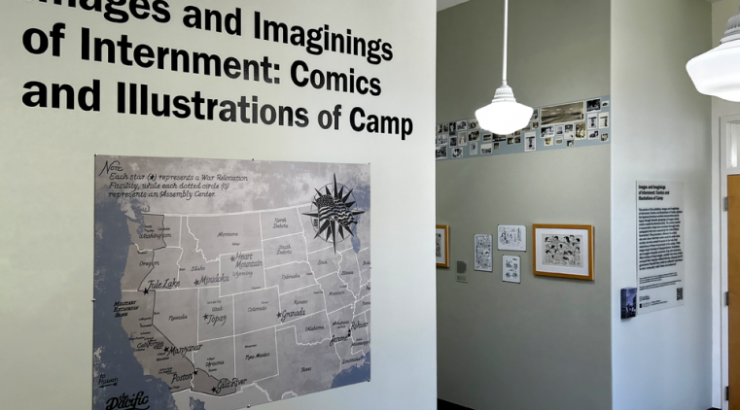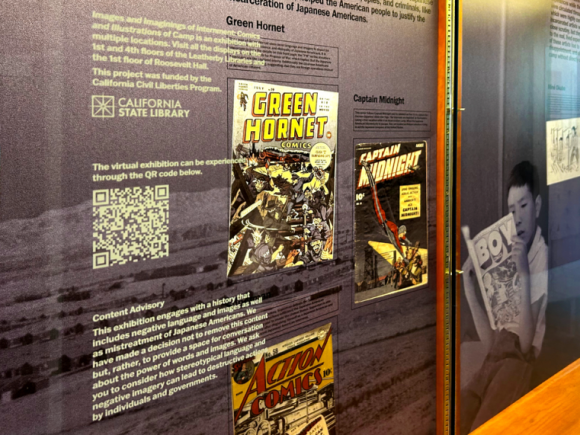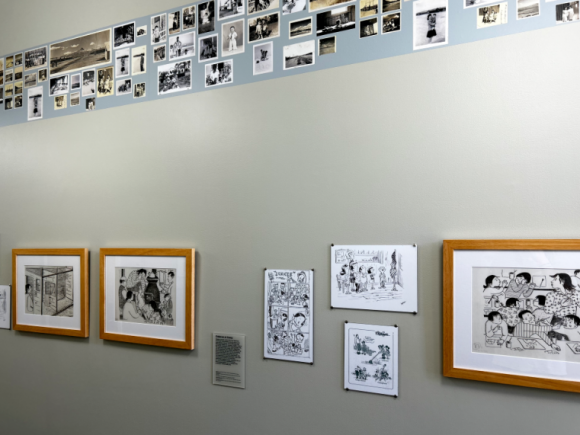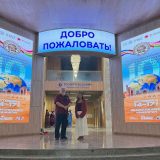
From Our Eyes: Looking into the Reality of Life within Japanese American Incarceration Camps
August 17, 2023
This edition of From Our Eyes features alumnus and current staff member Christian Grevin (Political Science and History ‘22), who reflects on Dr. Stephanie Takaragawa’s recently installed Images and Imaginings of Internment: Comics and Illustrations of Camp exhibition, which examines the little-known visual representations of daily life within internment camps where Japanese Americans and Japanese immigrants were incarcerated during World War II.
The Images and Imaginings of Internment: Comics and Illustrations of Camp exhibition offers a powerful look into the reality of life within Japanese American incarceration camps across the United States during World War II. Atrocities committed abroad by various actors during the war, such as the Nazi concentration/death camps and the dropping of the atomic bombs, have received copious amounts of attention from American citizens, and the film industry; yet, when it comes to the cruelty enacted within the nation’s borders during the war, there has long been silence. Japanese American incarceration is a topic not often discussed within mainstream society for several reasons – most notably, the uncomfortable feelings conjured up when discussing the U.S. government and citizens’ direct involvement in developing these racist laws and inhumane camps. It is easy for us to consciously, and subconsciously, view the brutality of war as having occurred in distant places, for it lets us detach ourselves from the role we play in these conflicts and the horrific events that flow from them. This exhibition brings the travesties and realities of the Japanese American internment camps to the forefront through the exploration of images and comic books, one of the ways in which those living in the camps reflected upon and memorialized their experiences.

Images and Imaginings of Internment: Comics and Illustrations of Camp exhibition, Leatherby Libraries.
I toured the exhibit, located in both Roosevelt Hall and Leatherby Libraries, this past July with the curators Dr. Stephanie Takaragawa (Sociology), Dr. Jan Osborn (English), and Jessica Bocinski (Escalette Collection) who spoke about the content of the exhibit and the process that took place to create it. The artwork was divided in a unique way, not by artist as one would typically expect, but instead by subject matter. Visitors to the exhibit see what life was like within these camps as topics like daily life, food, sanitation, and children at camp are explored. The curators also took great care in contextualizing the comics by providing statistics and background information on the camps to give visitors a broader understanding of Japanese American internment. I was surprised with the reality that over 120,000 individuals were incarcerated, and of those, nearly half were children.
Dr. Takaragawa discussed how her family’s own incarceration experience, and her discovery of it, inspired the creation of this project. I found myself again reminded of the ways this history has been neglected. Days after exploring the exhibit, I coincidentally learned through conversation that my next-door neighbor’s parents had been incarcerated. These camps have impacted countless lives, with repercussions that are still seen today and will remain for generations to come. Projects like this exhibition – that carefully explore the intricacies of this history – are integral to informing people of this history and sparking often difficult conversations and realizations.
Funding for this project was provided by the California Civil Liberties Program and Chapman University’s Innovation in Diversity and Inclusion Research, Scholarship and Creative Activity grant. Visit our exhibition, located on the first floor of Roosevelt Hall and the 1st and 4th floors of the Leatherby Libraries at Chapman University, open from May 2023-December 2023. Our virtual exhibition allows you to continue learning about Images and Imagingings of Internment.


